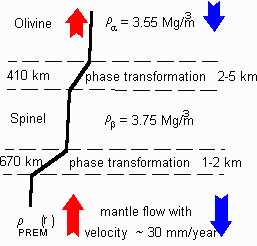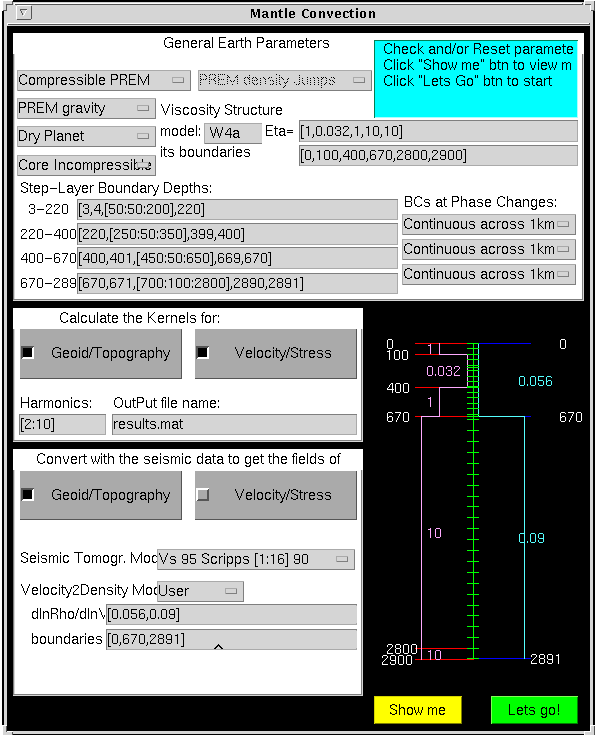SVETLANA PANASYUK
Medical Hyperspectral Imaging
Optical Metrology
Tissue Spectroscopy
Mantle Flow
GPS
Remote Sensing
Image Processing
Fun
Reference Earth Model
|
 The solid-solid phase change at 400-km corresponds to a transition between the alpha-beta (A-B) structures of a
multi-component olivine with about 6% change in density. Due to the small concentration of forsterite in the
natural mantle olivine, there is a thin region where both phases coexist in equilibrium and where the
macroscopically observed density changes occur. Depending on the particular p-T-x path taken by a piece of
material, the thickness of the two-phase region varies.
The solid-solid phase change at 400-km corresponds to a transition between the alpha-beta (A-B) structures of a
multi-component olivine with about 6% change in density. Due to the small concentration of forsterite in the
natural mantle olivine, there is a thin region where both phases coexist in equilibrium and where the
macroscopically observed density changes occur. Depending on the particular p-T-x path taken by a piece of
material, the thickness of the two-phase region varies.
The transformation at a depth of 670-km is fundamentally different from the A-B transition, because it involves a change in the chemical composition between the components. The olivine and pyroxene-garnet components transform into an aggregate of magnesiowustite and perovskite with about 10% density change across the 1-2 km thick phase change region. Similar to many solid-solid transformations involving density change, the deep mantle phase changes cannot occur at equilibrium conditions. A finite protrusion into the metastable region produces a driving force large enough to overcome an energetic barrier created by the elastic stresses and the surface tension around a nucleus. Many factors, such as chemical diffusion, multi-component system, effective shape factor, etc. can increase this metastable overstep, and therefore reduce width of the two-phase region where the major percentage of density change occurs.The deep-Earth phase transformations are mainly induced and controlled by pressure. Macroscopically, the reaction proceeds up to completion as the mantle flow drags the material steadily into different depths (with the speed of couple centimeters a year). We discuss the effects of phase transformations in the GJI paper. To facilitate the understanding of the mantle convection, I wrote a MATLAB code to calculate the flow characteristics (such as velocities and stresses), geoid and dynamic topography. The code has very neat graphical-user-interface and runs pretty fast (with a blink of an eye). Of course, you have to know many Earth parameters and data to run the program. See below an example of that graphical-input window: |
 The Deep Earth Phase Transformations are
believed to occur at depths of about 400-km and 670-km.
The Deep Earth Phase Transformations are
believed to occur at depths of about 400-km and 670-km.